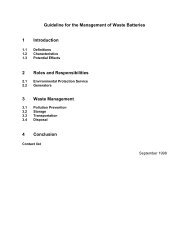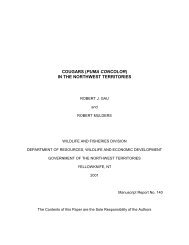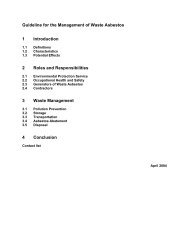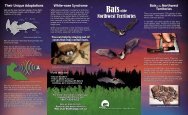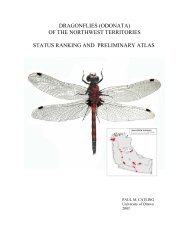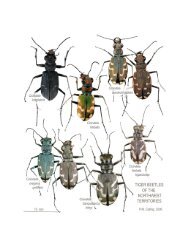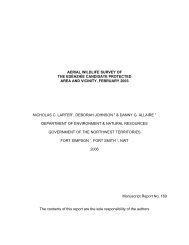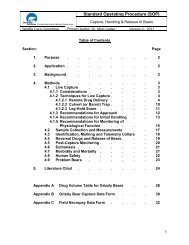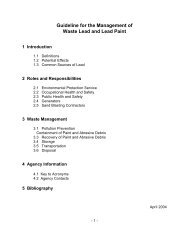NWT Air Quality Report (2011) - Environment and Natural ...
NWT Air Quality Report (2011) - Environment and Natural ...
NWT Air Quality Report (2011) - Environment and Natural ...
You also want an ePaper? Increase the reach of your titles
YUMPU automatically turns print PDFs into web optimized ePapers that Google loves.
CO affects humans <strong>and</strong> animals by interfering with the ability of the blood to transportoxygen around the body.The <strong>NWT</strong> st<strong>and</strong>ards for CO reflect the national maximum desirable levels of 15mg/m 3(1-hour average) <strong>and</strong> 6mg/m 3 (8-hour average). CO values are reported in mg/m 3 asopposed to other gaseous pollutants, which are reported in μg/m 3 .Acid DepositionAcidity in precipitation is measured in pH units on a scale of 0 to 14. A value of sevenindicates neutral, values less than seven indicate acidic conditions <strong>and</strong> values greater thanseven indicate alkaline conditions. Even clean precipitation is slightly acidic – aroundpH5.6 – due to the presence of naturally occurring concentrations of carbon dioxide <strong>and</strong>minor amounts of sulphate <strong>and</strong> nitrate ions. The introduction of sulphur dioxide <strong>and</strong> nitrogenoxide emissions from combustion of fossil fuels for industrial, commercial <strong>and</strong> individualactivities can result in an increase in acidic compounds in the atmosphere – often in areasfar removed from the original emission sources. The removal of these sulphur <strong>and</strong> nitrogencompounds through atmospheric washout is reflected in the increased acidity (lower pHvalues) of precipitation. Calcium <strong>and</strong> magnesium ions – mostly from natural sources – act toneutralize acidity in precipitation.Generally, precipitation with a pH value of 5.0 or less is termed ‘acidic’. However,assessment of acid precipitation is usually based on deposition to an area over a specifiedtime period (e.g. kilograms per hectare per year, kg/ha/yr) rather than review of specificprecipitation event parameters. Also, the degree of impact to a particular environmentis influenced by its ‘buffering’ capacity or ability to tolerate the acidic inputs. Therefore,determination of acceptable limits usually requires a range of values to reflect the differingtolerances of various areas.36 <strong>NWT</strong> <strong>Air</strong> <strong>Quality</strong> <strong>Report</strong> <strong>2011</strong>



